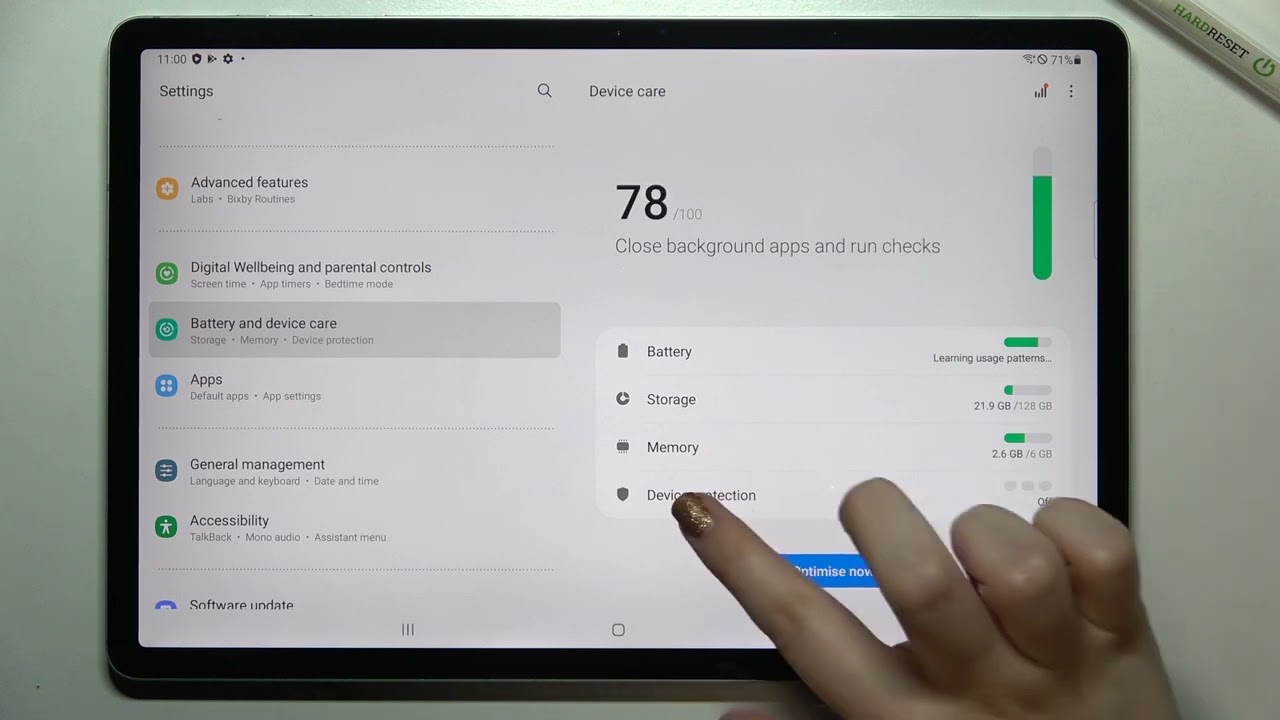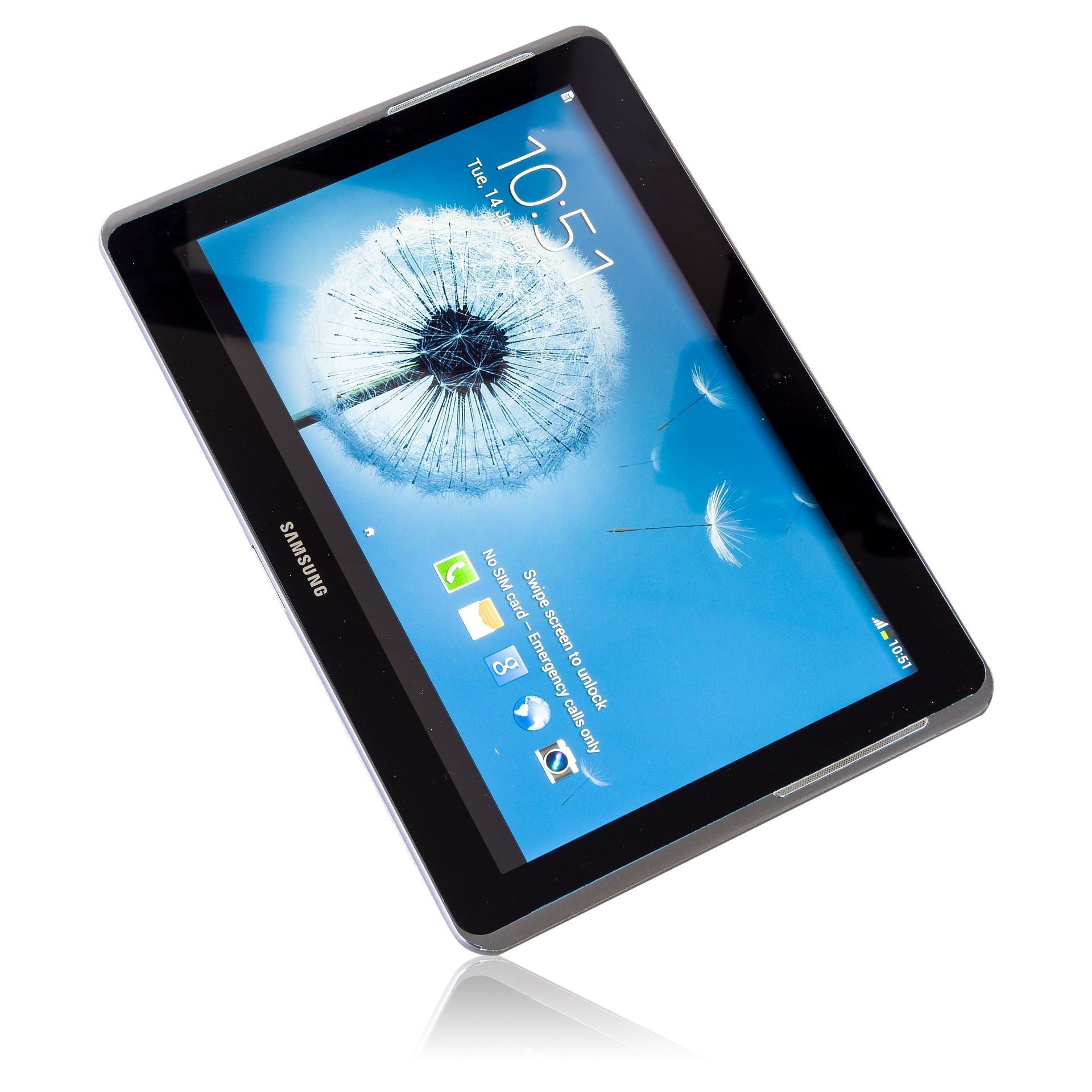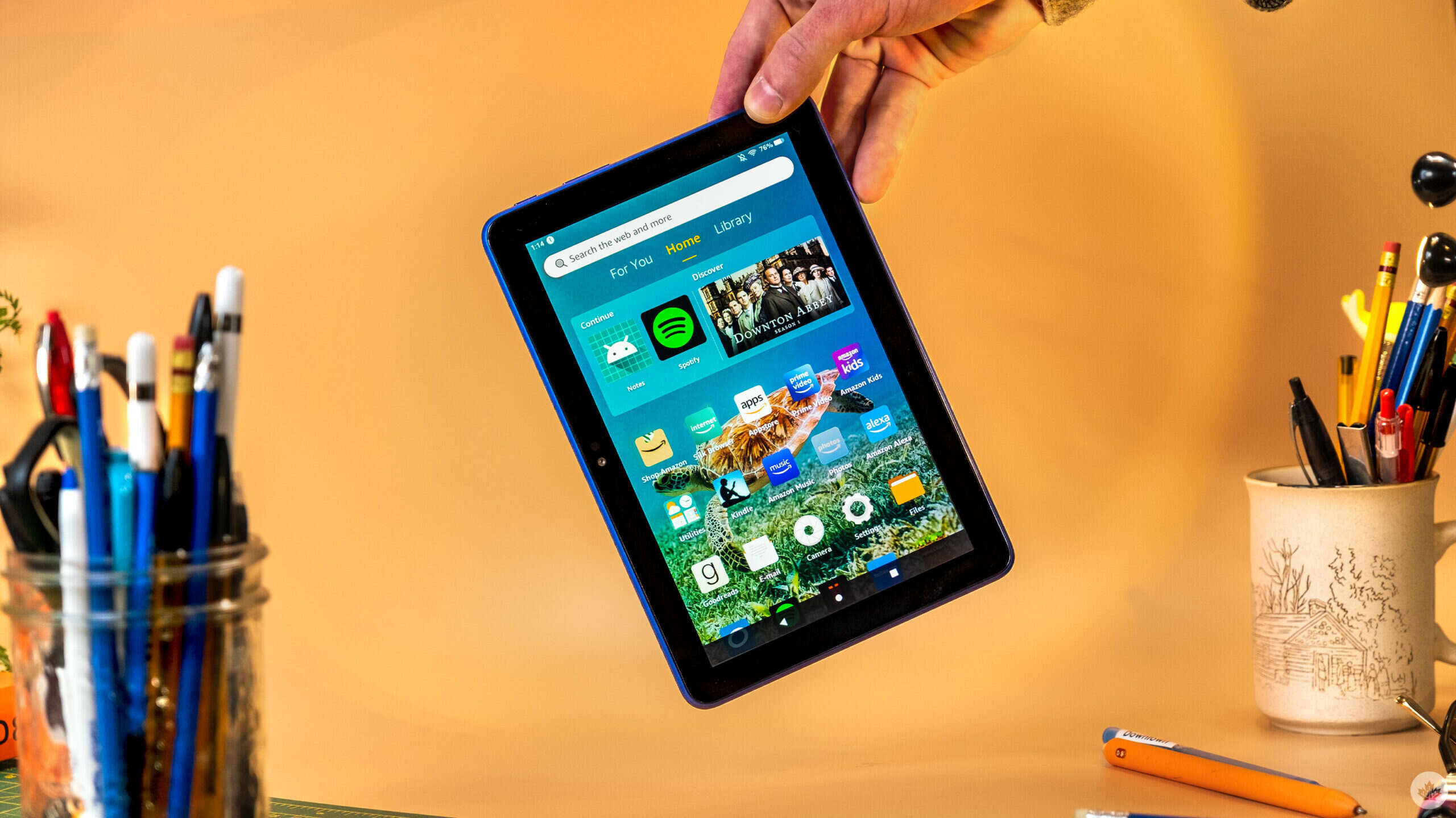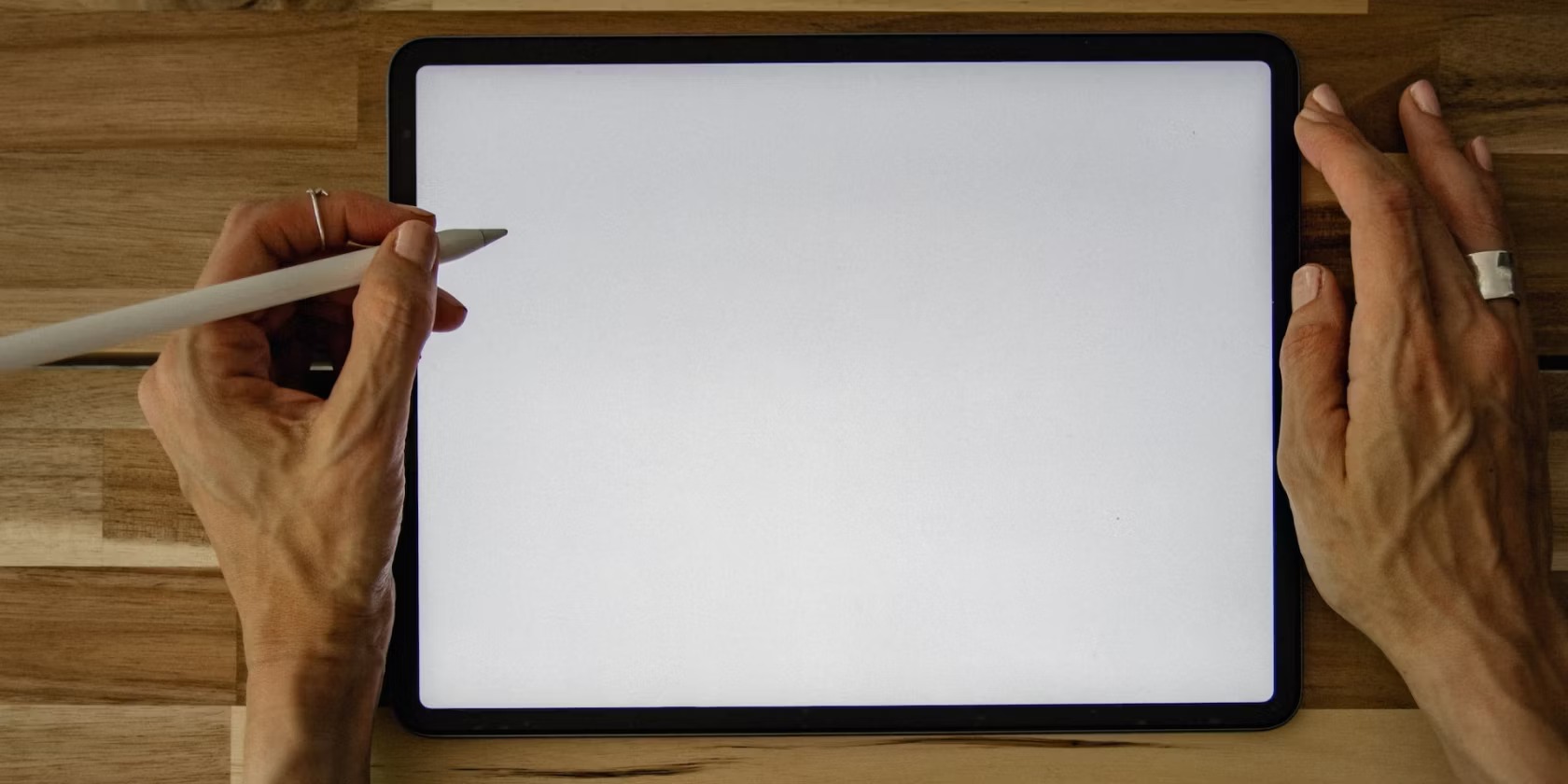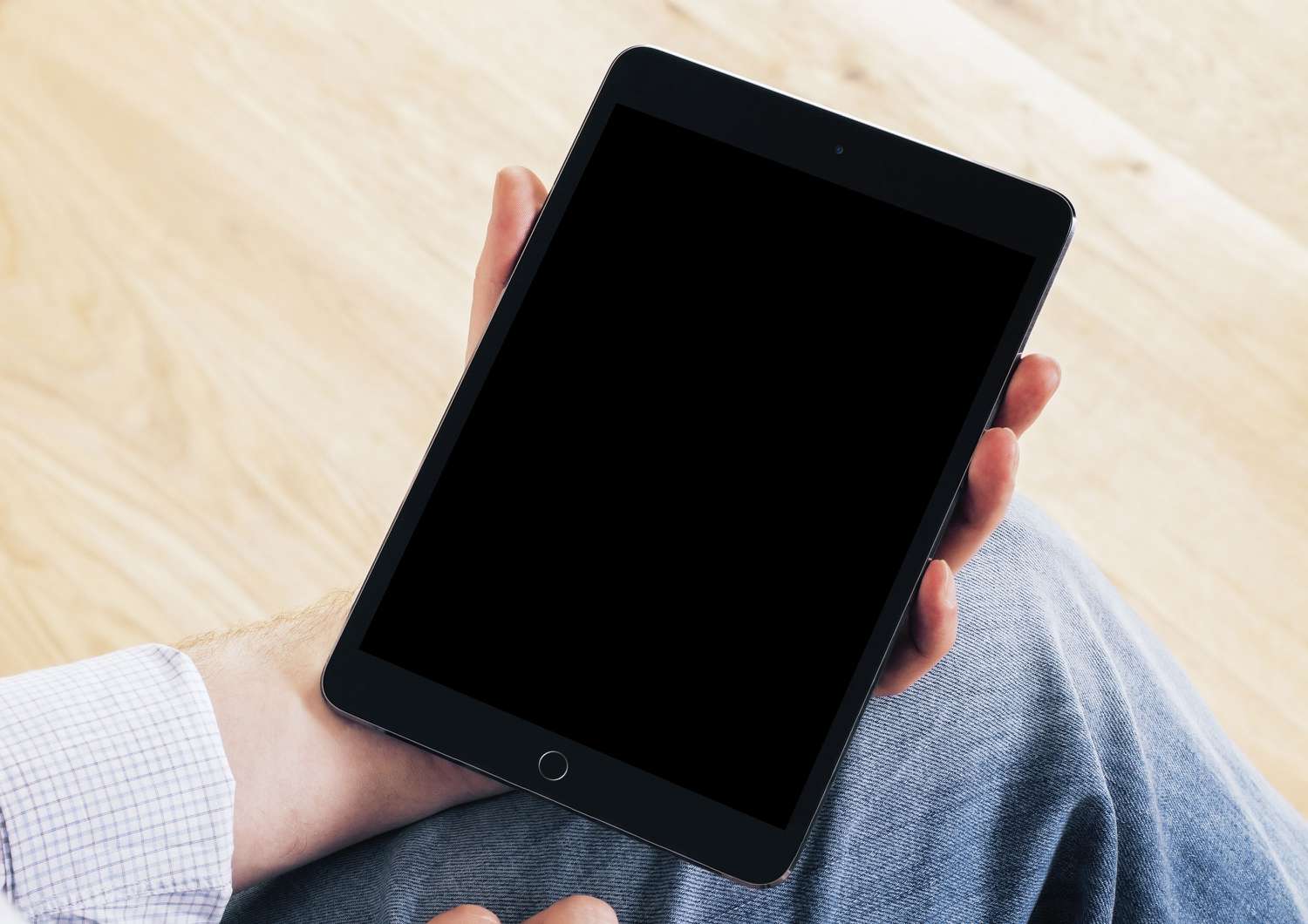Introduction
Welcome to the world of tablets, where mobile computing meets convenience and portability. Tablets have revolutionized the way we access information, connect with others, and entertain ourselves. However, just like any other digital device, tablets are susceptible to viruses and malware.
Viruses on your tablet can be inconvenient and potentially damaging. They can slow down your device, cause random freezes, drain your battery life, and even steal your personal information. That’s why it’s crucial to know how to remove viruses from your tablet and prevent future infections.
In this article, we will guide you through the steps to remove viruses from your tablet effectively. Whether you’re using an Android tablet or an iPad, the principles apply, although the specific methods might differ slightly.
Before we jump into the steps, it’s important to understand the different types of tablet viruses. Malware, adware, spyware, and ransomware are some of the common types of viruses that can infect your tablet. Each type has its own purpose and impact on your device. Being aware of these viruses will help you better understand their signs and symptoms, as well as the steps to remove them.
So, if you suspect that your tablet has been infected or you want to stay proactive and protect your device, keep reading. By following the steps outlined in this article, you’ll be well-equipped to remove viruses from your tablet and keep it secure.
Understanding the Different Types of Tablet Viruses
Before we delve into the process of removing viruses from your tablet, it’s crucial to understand the different types of viruses that can infect your device. Each type has its own characteristics, impacts, and methods of spreading. By familiarizing yourself with these viruses, you can better identify their signs and symptoms, as well as take appropriate measures to protect your tablet.
1. Malware: Malware, short for malicious software, is a broad term that encompasses various types of harmful programs designed to damage or gain unauthorized access to your tablet. It can include viruses, worms, trojans, and more. Malware can infect your tablet through infected apps, downloaded files, or malicious websites.
2. Adware: Adware, as the name suggests, is software that displays unwanted advertisements on your tablet. These ads can be in the form of pop-ups or banners and can be quite intrusive. Adware is often bundled with free apps or downloaded from untrusted sources.
3. Spyware: Spyware is designed to secretly monitor and gather information from your tablet. It can track your online activities, record keystrokes, and even capture personal data such as passwords and credit card information. Spyware often disguises itself as legitimate apps or software updates.
4. Ransomware: Ransomware is a particularly malicious type of virus that encrypts your files and demands a ransom in exchange for their release. Once infected, your tablet becomes locked, and you are unable to access your files until you pay the ransom. Ransomware is commonly spread through malicious email attachments or compromised websites.
5. Phishing Attacks: While not technically viruses, phishing attacks are a common threat to tablet users. Phishing refers to the practice of tricking users into revealing their personal information, such as passwords or credit card details, by posing as a trustworthy source. These attacks often come in the form of fraudulent emails or websites.
Now that you have a better understanding of the different types of tablet viruses, you can be more vigilant and proactive in protecting your device. In the next section, we will explore the signs and symptoms that indicate your tablet may be infected.
Signs and Symptoms of a Virus on Your Tablet
Identifying whether your tablet is infected with a virus is crucial for taking the right course of action. Here are some common signs and symptoms that may indicate the presence of a virus on your tablet:
- Slow Performance: If your tablet suddenly starts to lag, freeze, or become slow in responding to commands, it could be a sign of a virus. Viruses can consume system resources, resulting in decreased performance.
- Unusual Battery Drain: If you notice that your tablet’s battery is draining faster than usual, it may be due to a malicious app or process running in the background.
- Excessive Pop-ups and Ads: If you are bombarded with an unusual number of pop-ups, ads, or redirecting web pages, it is likely that your tablet is infected with adware. These intrusive ads can hinder your browsing experience.
- Unexplained Data Usage: If you notice a significant increase in your data usage without any changes in your browsing habits, it could be a sign that your tablet is secretly transmitting data as a result of a virus.
- Unauthorized Apps and Settings Changes: If you find unfamiliar apps on your tablet that you didn’t install or notice unexpected changes to your settings, it’s a clear indication that your device may be compromised.
- Strange Behavior and Error Messages: Viruses can cause your tablet to behave erratically, such as frequent app crashes, random reboots, or displaying strange error messages.
- Unusual Network Activity: If you notice a sudden increase in network activity on your tablet, such as data transfers or unusual connections, it may indicate that a virus is communicating with external servers.
Keep in mind that these signs and symptoms can also be caused by other factors, such as insufficient storage space or outdated software. However, if you experience multiple symptoms and suspect a virus, it’s essential to take immediate action to safeguard your tablet and its data.
In the next section, we will walk you through the step-by-step process of removing viruses from your tablet effectively.
Step 1: Backup Your Data
Before you begin the process of removing viruses from your tablet, it is crucial to back up your data. Backup ensures that your important files, photos, and documents are safe and can be easily restored if any issues arise during the virus removal process.
You can back up your tablet’s data using various methods:
- Cloud Storage: Utilize cloud storage services such as Google Drive, Dropbox, or iCloud to securely store your data. These services offer convenient and reliable backups that can be accessed from any device with an internet connection.
- Computer Backup: Connect your tablet to a computer and transfer your data to a local hard drive or an external storage device. This method allows you to create a physical backup of your data, offering an additional layer of security.
- Sync with Google Account: If you’re using an Android tablet, ensure that your data is synced with your Google account. This will automatically store your contacts, calendar events, app data, and other settings in the cloud.
- Use Backup Apps: There are various backup apps available for both Android and iOS devices that can streamline the backup process. These apps allow you to select specific files, folders, or even your entire tablet’s data for backup.
Remember to check that your backup is complete and functional before proceeding with virus removal. This ensures that you have a recent copy of your data that can be restored if necessary.
By backing up your data, you protect valuable information and minimize the risk of permanent data loss during the virus removal process. With your data securely backed up, you’re ready to move on to the next step: updating your tablet’s operating system.
Step 2: Update Your Tablet’s Operating System
Keeping your tablet’s operating system (OS) up to date is essential for maintaining its security and performance. OS updates often include security patches and bug fixes that can help protect your device from viruses and vulnerabilities. Therefore, before proceeding with virus removal, it is crucial to ensure that your tablet’s OS is updated to the latest version.
Here’s how you can update your tablet’s OS:
- Android Devices:
- Go to the “Settings” menu on your tablet.
- Scroll down and tap on “About Phone” or “About Tablet”.
- Tap on “Software Updates” or “System Updates”.
- If an update is available, tap on “Download” and “Install”.
- Follow the on-screen instructions to complete the update.
- iOS Devices:
- Go to the “Settings” app on your iPad or iPhone.
- Tap on “General”.
- Select “Software Update”.
- If an update is available, tap on “Download and Install”.
- Enter your device passcode if prompted and follow the on-screen instructions.
While updating your tablet’s OS, it is recommended to connect it to a stable Wi-Fi network and ensure that it has sufficient battery power or is plugged into a charger. OS updates can sometimes be large in size and may require a stable internet connection to download and install successfully.
By updating your tablet’s OS to the latest version, you ensure that you have the latest security patches and bug fixes, making it more difficult for viruses and malware to exploit vulnerabilities. With your tablet’s OS updated, you’re ready to proceed to the next step: installing an antivirus app.
Step 3: Install an Antivirus App
Installing a reliable antivirus app on your tablet is an essential step in protecting your device from viruses and malware. An antivirus app can detect and remove malicious software, safeguarding your tablet and your personal information. Here’s how you can install an antivirus app on your tablet:
- Research and Choose an Antivirus App: Look for reputable antivirus apps from trusted developers. Read reviews and consider features such as real-time scanning, malware detection rates, and user-friendly interface.
- Go to Your Device’s App Store: Open the app store on your tablet. For Android devices, it’s the Google Play Store, and for iOS devices, it’s the App Store.
- Search for the Antivirus App: Use the search function in the app store and enter the name of the antivirus app you have chosen.
- Select and Install the App: Tap on the antivirus app from the search results, then tap on the “Install” or “Get” button. Follow the on-screen instructions to complete the installation.
- Set Up and Configure the Antivirus App: Once the app is installed, open it and follow the setup process. This usually involves granting necessary permissions and customizing the antivirus settings to your preference.
It is important to keep in mind that an antivirus app alone cannot guarantee complete protection against all threats. However, it adds an additional layer of defense against known and emerging viruses.
Regularly update your antivirus app to ensure that it has the latest virus definitions and security features. This will enable it to effectively detect and remove new and evolving threats.
With your antivirus app installed and configured, you’re now ready to move on to the next step: running a full scan and removing detected viruses from your tablet.
Step 4: Run a Full Scan and Remove Detected Viruses
Now that you have installed an antivirus app on your tablet, it’s time to run a full scan to detect and remove any viruses or malware that may be lurking on your device. Follow these steps to run a full scan and remove detected viruses:
- Open the Antivirus App: Launch the antivirus app you installed in the previous step.
- Navigate to the Scan Section: Look for the “Scan” or “Security” tab within the antivirus app’s interface.
- Select Full Scan: Choose the option for a full system scan. This will thoroughly scan your tablet’s storage, apps, and files for any potential viruses.
- Start the Scan: Tap on the “Start Scan” button or similar to initiate the scanning process. This may take some time, depending on the size of your tablet’s storage.
- Review the Scan Results: Once the scan is complete, the antivirus app will display the scan results. It will show any viruses or malware detected on your tablet.
- Remove the Detected Viruses: Follow the prompts provided by the antivirus app to remove or quarantine the detected threats. The app may offer options to delete or clean the infected files.
It is recommended to follow the instructions provided by the antivirus app carefully. Ensure that legitimate files or system files are not inadvertently flagged as viruses and removed. False positives can occur, so it’s always good to double-check before taking any action.
After removing the detected viruses, it’s advisable to run subsequent scans to ensure that your tablet is completely clean. Regularly scan your tablet for viruses as a preventive measure to catch any potential threats early.
With the viruses removed, you can proceed to the next step: clearing cache and deleting unnecessary apps to optimize your tablet’s performance.
Step 5: Clear Cache and Delete Unnecessary Apps
Clearing the cache and removing unnecessary apps from your tablet can help optimize its performance and free up valuable storage space. Over time, cached data and unused apps can accumulate, slowing down your device and potentially leaving it vulnerable to viruses. Follow these steps to clear cache and delete unnecessary apps:
- Clear Cache: Go to the “Settings” menu on your tablet and look for the “Storage” or “Storage & USB” option. Tap on it, then select “Cached data”. Confirm the action to clear the cache. This will remove temporary files and data that can accumulate and potentially harbor viruses.
- Delete Unnecessary Apps: Navigate to the “Apps” or “Applications” section in your tablet’s settings. Review the list of installed apps and identify those that you no longer use or need. Tap on an app and select “Uninstall” or “Delete” to remove it from your tablet. Removing unused apps not only frees up space but also reduces the potential attack surface for viruses and malware.
- Disable Unwanted Pre-installed Apps: Some tablets come with pre-installed apps that you may not use or find unnecessary. While these apps cannot be completely removed, you can disable them to prevent them from running in the background and consuming system resources. In the app settings, look for the “Disable” or “Turn Off” option for these pre-installed apps.
- Perform App Updates: Update your remaining apps to their latest versions. Developers frequently release updates that include bug fixes, security patches, and performance enhancements. Keeping your apps up to date helps ensure they are secure and optimized.
By clearing the cache and removing unnecessary apps, you not only create more space on your tablet but also minimize the potential risks associated with outdated or unused software. This step improves your tablet’s performance and reduces the likelihood of encountering viruses or malware.
With the cache cleared and unnecessary apps removed, let’s move on to the next step: enabling security features on your tablet.
Step 6: Enable Security Features
Enabling the security features on your tablet is an important step in enhancing its overall protection against viruses and malware. These built-in security features can provide an additional layer of defense and safeguard your device from potential threats. Follow these steps to enable security features on your tablet:
- Screen Lock: Set up a strong lock screen password, PIN, pattern, or fingerprint lock. This prevents unauthorized access to your tablet, protects your personal data, and adds a barrier against potential viruses.
- Secure Lock Screen Notifications: Adjust the lock screen settings to ensure that sensitive information, such as messages or emails, is not displayed on the lock screen. This prevents unauthorized individuals from viewing your personal data.
- Location and Remote Tracking: Enable a security feature that allows you to track the location of your tablet remotely. In case of theft or loss, you can use this feature to locate and potentially recover your device.
- Find My Device: Activate the “Find My Device” feature on your tablet. This can help you locate, lock, or erase your tablet remotely in case it gets lost or stolen.
- Automatic App Updates: Enable automatic updates for apps on your tablet. This ensures that you receive the latest security patches and bug fixes promptly, reducing the risk of vulnerabilities that viruses can exploit.
- Unknown Sources: Disable the option to install apps from unknown sources. This setting prevents the installation of potentially harmful apps from untrusted third-party sources.
Enabling these security features provides an added layer of protection for your tablet. They not only help prevent unauthorized access but also assist in tracking and securing your device in case of loss or theft. Regularly review and update your security settings as new options or updates become available.
With the security features enabled, you’re now better equipped to avoid suspicious websites and downloads—our next step in the process.
Step 7: Avoid Suspicious Websites and Downloads
One of the most effective ways to prevent viruses and malware from infecting your tablet is by staying vigilant when browsing the internet and downloading apps or files. By avoiding suspicious websites and downloads, you significantly reduce the risk of encountering malicious content. Follow these guidelines to help protect your tablet:
- Stick to Trusted Websites: When browsing the internet, stick to reputable and well-known websites. Avoid clicking on suspicious links or visiting questionable sites that could potentially contain malicious content.
- Be Wary of Phishing Attempts: Be cautious when providing personal information online. Avoid submitting sensitive data, such as passwords or credit card details, on websites that appear suspicious or unsecured. Phishing attacks often use deceptive tactics to trick users into revealing their personal information.
- Download Apps from Official Stores: To minimize the risk of downloading malicious apps, only download apps from official app stores like the Google Play Store or the Apple App Store. These platforms have security measures in place to verify the authenticity and safety of the apps they host.
- Read App Reviews and Ratings: Before downloading an app, read user reviews and check its ratings. Pay attention to any negative feedback, reports of suspicious behavior, or irregular permissions requested by the app.
- Avoid Pirated or Cracked Apps: Steer clear of pirated or cracked apps, as they often come bundled with viruses or malware. These unauthorized versions of paid apps may seem tempting, but they pose a significant security risk to your tablet.
- Exercise Caution with Email Attachments: Be cautious when opening email attachments, especially if you receive unexpected emails from unknown or suspicious senders. Viruses and malware can be disguised as legitimate-looking attachments.
- Use a Reliable Ad Blocker: Consider using an ad blocker on your tablet’s browser to help prevent intrusive ads and minimize the risk of inadvertently clicking on malicious advertisements.
By adopting these practices, you can greatly reduce the chances of encountering viruses and malware on your tablet. Stay proactive, stay informed, and always exercise caution when navigating the digital landscape.
Now that you’re aware of how to avoid suspicious websites and downloads, let’s focus on being cautious with app permissions in the next step.
Step 8: Be Cautious with App Permissions
When installing apps on your tablet, it’s essential to be cautious and mindful of the permissions they request. App permissions grant various levels of access to your device’s features and data. By carefully reviewing and managing app permissions, you can protect your privacy and minimize the risk of potential security threats. Follow these guidelines to ensure you’re cautious with app permissions:
- Review Permissions Before Installation: Before installing an app, carefully review the permissions it requires. Consider whether the requested permissions align with the app’s functionality. Be cautious of apps that request unnecessary or excessive permissions.
- Be Aware of Sensitive Permissions: Pay special attention to sensitive permissions that involve access to your personal data, such as contacts, location, microphone, and camera. Consider whether the app’s purpose justifies the need for such access.
- Deny Unnecessary Permissions: If an app requests permissions that seem unrelated to its core functionality, consider denying those permissions during installation. Some apps may function without certain permissions, and by denying unnecessary access, you reduce potential vulnerabilities.
- Regularly Review App Permissions: Periodically review the permissions granted to installed apps. Remove any permissions that are no longer necessary or that you feel uncomfortable with. This can be done through the app settings on your tablet.
- Stay Updated with Permission Changes: Pay attention to app updates as they may introduce changes to permissions. Review the updated app permissions and make sure they are still acceptable. Updates can sometimes introduce new permissions that you may want to review before granting.
- Consider Using Permission Management Apps: There are apps available that allow you to manage app permissions more granularly. These apps can provide additional control and transparency over the permissions granted to your installed apps.
Being cautious with app permissions helps protect your personal data and privacy. By carefully managing permissions, you can mitigate the risk of apps accessing and potentially misusing sensitive information on your tablet.
Now that you have learned about being cautious with app permissions, let’s proceed to the next step: regularly updating apps and software on your tablet.
Step 9: Regularly Update Apps and Software
Regularly updating apps and software on your tablet is crucial for maintaining its security and ensuring optimal performance. Developers release updates that often include bug fixes, performance improvements, and security patches. By staying up to date with these updates, you can protect your tablet from potential vulnerabilities and the latest security threats. Follow these guidelines to regularly update apps and software:
- Enable Automatic App Updates: To ensure that your installed apps are always up to date, enable automatic app updates on your tablet. This way, new updates will be downloaded and installed in the background without any manual intervention.
- Check for App Updates Manually: Periodically check for app updates manually, especially if you do not have automatic updates enabled. Open the app store on your tablet, navigate to the “Updates” section, and install any available updates for your installed apps.
- Update System Software: In addition to app updates, keep your tablet’s operating system and system software up to date. Regularly check for system updates in the settings menu and install any available updates. These updates often include important security patches and stability improvements.
- Update Web Browsers: Keep your web browsers, such as Chrome, Safari, or Firefox, updated with the latest versions. Browsers are frequently targeted by hackers, and updates address vulnerabilities, ensuring a safer browsing experience on your tablet.
- Enable Automatic System Updates: If your tablet has the option for automatic system updates, enable it. This allows your device to download and install software updates as soon as they become available, ensuring you have the latest security patches and improvements.
- Restart Your Tablet After Updates: After installing updates, it’s a good practice to restart your tablet. This ensures that any changes and updates take effect properly and helps maintain the overall stability and performance of your device.
Regularly updating apps and software is an essential step in protecting your tablet from viruses and vulnerabilities. By keeping your tablet’s applications and system up to date, you can maximize its security and ensure a smoother and more reliable user experience.
Now that you understand the importance of regular updates, let’s move on to the final step: monitoring your tablet’s performance and behavior.
Step 10: Monitor Your Tablet’s Performance and Behavior
After taking the necessary steps to remove viruses from your tablet and implementing security measures, it’s essential to monitor its performance and behavior regularly. By staying vigilant and attentive to any unusual signs or symptoms, you can quickly address potential issues and ensure that your tablet remains secure. Follow these guidelines to effectively monitor your tablet’s performance and behavior:
- Observe Speed and Responsiveness: Pay attention to your tablet’s speed and responsiveness. Monitor if it starts to slow down, experience frequent crashes, freezes, or becomes unresponsive. These issues could indicate the presence of malware or performance problems that need to be addressed.
- Check Battery Usage: Monitor your tablet’s battery usage and performance. If you notice a sudden decrease in battery life or unusually high battery drain, it may be a sign of a virus or app running in the background. Investigate and take necessary actions to address the issue.
- Regularly Run Antivirus Scans: Periodically run antivirus scans on your tablet to detect any potential viruses or malware. Although you’ve taken preventative measures, it’s important to remain proactive. Regular scans can catch any new threats or infections that may have slipped through.
- Review Internet Data Usage: Monitor your tablet’s internet data usage. If you notice a significant increase without any changes in your browsing habits, it could indicate that malware is transmitting data in the background. Investigate any unusual data usage and take appropriate actions to address the issue.
- Stay Alert for Unusual Behavior: Be aware of any unusual behavior or unexpected issues on your tablet. This could include random app installations, changes to settings, or unusual pop-ups. These signs may indicate a virus or malware activity that needs to be addressed promptly.
- Keep Up with Security News: Stay updated on the latest security news and advisories related to tablets and mobile devices. This will help you stay informed about new threats, vulnerabilities, and recommended security practices. Being aware of emerging risks empowers you to take proactive measures to protect your tablet.
By monitoring your tablet’s performance and behavior, you can quickly identify and address any potential issues or security threats. Regular attention and proactive measures will ensure that your tablet remains secure and performs optimally over time.
Congratulations! By following these ten steps to remove viruses from your tablet, implementing security measures, and monitoring its performance, you have taken significant strides towards keeping your tablet safe and secure. Remember that maintaining a secure tablet is an ongoing process, so it’s essential to stay informed, update your software, and practice safe browsing habits consistently.
Conclusion
Removing viruses from your tablet and safeguarding it from future infections is crucial for ensuring optimal performance and protecting your personal information. By following the ten steps outlined in this guide, you have equipped yourself with the knowledge and tools necessary to effectively combat viruses and malware.
From backing up your data and updating your tablet’s operating system to installing an antivirus app, running scans, and being cautious with app permissions and downloads, each step plays a vital role in fortifying the security of your tablet.
Remember to regularly monitor your tablet’s performance and behavior, staying alert for any signs of potential threats. By identifying and addressing issues promptly, you can maintain a secure and efficient tablet experience.
Keep in mind that practicing safe browsing habits, avoiding suspicious websites and downloads, and keeping your apps and software up to date are ongoing processes. Continuous vigilance and proactive measures are essential to prevent viruses and malware from compromising your tablet’s security.
With a secure tablet, you can confidently browse the internet, download apps, and enjoy the convenience and functionality that your device offers.
By implementing these steps and staying informed about the latest security practices, you can minimize the risk of viruses, protect your tablet, and have peace of mind knowing that your data is safe.
Thank you for following this guide, and best wishes in keeping your tablet secure and virus-free!







